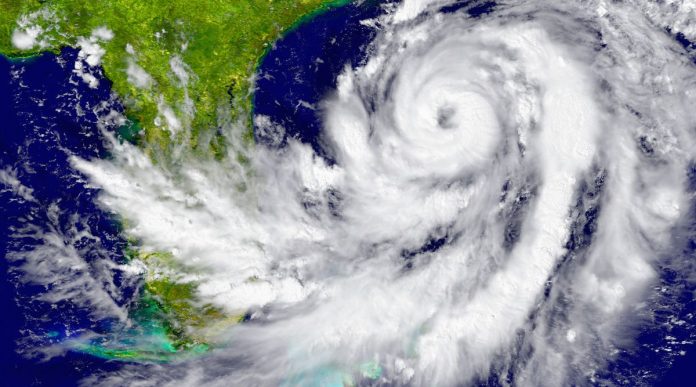Hurricanes are powerful storms that can cause devastation to coastal areas as they sweep across the ocean with strong winds and heavy rain. While this may be enough to ruin your weekend, once these storms reach land, their intensity seems to die down. So, why do hurricanes lose strength once they reach the land? This article will take a look at how hurricanes form and the reason why their strength decreases when they hit land, so you can understand them better. By the end of this article, you’ll be able to explain why hurricanes lose strength once they reach the land to your friends and family!
Hurricane Categories
Hurricanes are classified according to their wind speed, which is measured by the Beaufort scale. The categories range from Category 1 (74-95 mph) to Category 5 (157 mph or higher). A hurricane’s strength can quickly change as it nears land and its winds interact with different features. Most hurricanes weaken when they hit land because they are no longer being fueled by warm ocean waters. As they travel over the land, dry air on the ground sucks up moisture from them, making them weaker. Stronger storms produce more of a vacuum effect that pulls water vapor out of clouds before rainfall even begins to form. Storms will also be weakened if there is an area of high pressure blocking their path inland. Areas where the coast line abruptly changes like mangrove swamps and coral reefs can disrupt some storm systems too
What Makes A Hurricane
A hurricane is a tropical cyclone, which is a generic term for a low-pressure system that forms in the tropics. These storms are fueled by warm ocean waters. As the air over the ocean rises, it cools and condenses, releasing latent heat into the atmosphere. This process creates thunderstorms and heavy rains, which in turn can create a spiral of low pressure. If this low-pressure system moves over open water, it can intensify into a hurricane. In the Atlantic Ocean, these storms rotate counterclockwise (or cyclonically) around an eye at their center. Hurricanes’ winds blow outwards from the center at about 120 miles per hour and can last for up to three weeks as they move across open water.
Where Do Hurricanes Come From
Most hurricanes that affect the United States come from the Atlantic Ocean. These storms usually form near the Cape Verde Islands, off the west coast of Africa. Hurricanes need warm water to form and grow. That’s why we see most of them in late summer and early fall, when the water in the Atlantic is at its warmest. But there are other things that can make a hurricane weaker or stronger. A weak hurricane can turn into a strong one if it moves over warmer water, or it may weaken if it moves over cooler water. If a storm moves over land for an extended period of time, it will be unable to gather moisture from the air and won’t be able to produce much rain. The wind slows down because there’s less space for it to travel between buildings and other objects on the ground as opposed to over open ocean surface
Where Do Hurricanes Go When They Hit Land
The first thing that happens when a hurricane hits land is that it starts to interact with different kinds of air masses. Usually, the air over land is warmer and drier than the air over water. This difference in temperature and moisture causes the hurricane to start to weaken. Additionally, wind shear increases as a hurricane moves over land, which can also disrupt the storm and cause it to weaken. Finally, land itself is not as uniform as water, so there are more obstacles for the hurricane to overcome as it moves inland. All of these factors work together to cause a hurricane to dissipate after it hits land.
Where Does A Hurricane Stop?
A hurricane is a giant storm. It starts over warm ocean water. The wind and rain from the hurricane can damage buildings, uproot trees, and knock out power lines. Once a hurricane reaches land, it starts to weaken. This is because it is no longer getting energy from the warm ocean water. The wind also starts to push the hurricane in different directions. Hurricanes can also weaken because they run into mountains or cold air. When this happens, the hurricane spreads out and dissipates. In order for a hurricane to regain its strength, it needs to move back over warm water or go through a process called regeneration. For example, if there are new thunderstorms that develop near the eye of the hurricane, this will help regenerate the storm. As these thunderstorms release heat, moisture, and other energy into the atmosphere around them, they strengthen the hurricane. Another way that a hurricane can regain strength is by moving over warmer waters again. If you have more questions about why hurricanes lose their strength after landfall please ask us!
Why do Hurricanes lose strength once reaching land?
Hurricanes are powered by warm ocean water, which they pull into the center of the storm. Once a hurricane reaches land, it no longer has access to this warm water, and therefore starts to weaken. Additionally, wind speeds tend to be lower over land than they are over water, which also contributes to a decrease in a hurricane’s strength. Another major factor is that when Hurricane Irma reached Florida on September 10th, 2017, it had already passed through an area with lots of trees and vegetation- knocking them down as it went- which reduced its intensity before landfall.
Where do hurricanes occur?
Hurricanes occur over warm ocean waters near the equator. These areas have high humidity and thunderstorms that release latent heat, which is what drives a hurricane. The warm ocean water evaporates and rises, while the cooler air above rushes in to take its place. This creates low pressure in the center of the hurricane, which sucks in more air from around it. The wind speed increases as it rotates around the low pressure center, and this is what makes a hurricane a powerful storm. A hurricane’s winds can reach up to 250 miles per hour when it reaches the peak of its intensity. It can also develop strong waves, heavy rain, and flooding during this time.
How does a hurricane develop?
A hurricane is a type of tropical cyclone, which is a generic term for a low-pressure system that rotates around a central point of low pressure. Hurricanes are classified as having winds of 74 miles per hour or greater. The Saffir-Simpson Hurricane Wind Scale is used to rate the potential property damage and flooding a hurricane will cause. A Category 5 hurricane has wind speeds of 157 miles per hour or higher.
Facts about Hurricanes
- A hurricane is a tropical cyclone that has winds of at least 74 miles per hour.
- The Saffir-Simpson Hurricane Wind Scale is used to classify hurricanes into five categories based on their wind speed.
- Hurricanes usually form over warm ocean waters near the equator.
- When a hurricane reaches land, it starts to weaken because it no longer has access to the warm ocean water that it needs to maintain its strength.
- Hurricanes can also weaken due to wind shear, which is when there are strong winds at different levels in the atmosphere that can tear a hurricane apart.
- Additionally, cooler air and fresh water can also cause a hurricane to weaken as it moves over land. 7. In some cases, even though a hurricane is weakening after making landfall, it can still be destructive and deadly. 8. For example, Hurricane Harvey landed in Texas with Category 4 winds but by the time it had crossed over land was downgraded to a tropical storm with Category 1 winds before finally dissipating completely 9 days later.
Conclusion
It’s all about the friction. Once a hurricane hits land, it starts to interact with things like trees, buildings, and roads. This interaction causes friction, which slows the hurricane down and weakens it. Additionally, landfall also cuts off a hurricane’s source of warm water, which is essential for its survival. So while it may take a hurricane a little while to weaken completely, it typically starts losing strength pretty quickly after hitting land.

